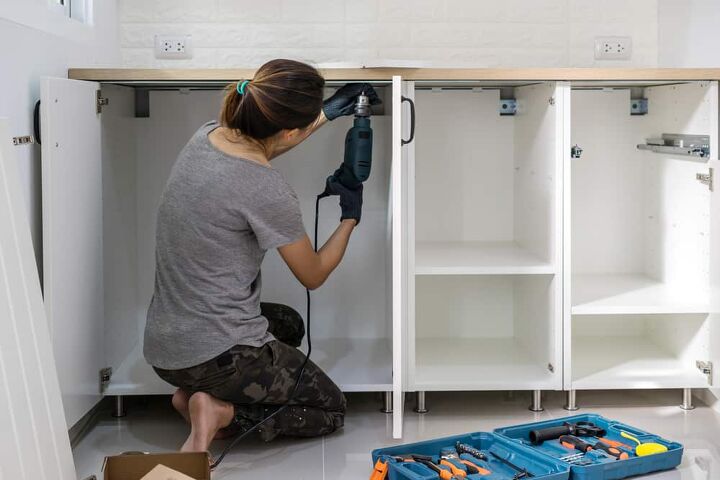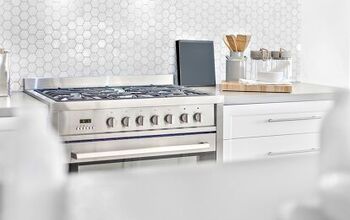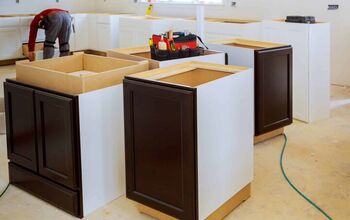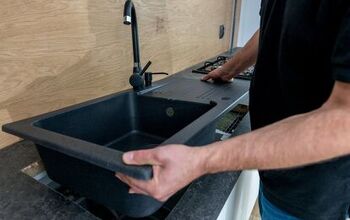How To Remove Kitchen Cabinets Without Removing The Countertop

Remodeling your kitchen is well worth your time. The new additions you introduce to your renovated kitchen can greatly increase overall home value. On top of that, those additions can also make your kitchen more enjoyable to use.
You don’t have to go all out with the renovation if you don’t have the time or resources for it. Making specific changes is an option as well. Homeowners can even remove old kitchen cabinets without having to remove their existing countertops.
To remove a cabinet without touching the countertop, you must start by unscrewing the cabinet. You should follow that up by cutting the back of the cabinet around the plumbing. Place some wooden beams underneath the countertop next to prop it up and then slide the cabinet out the back.
Removing kitchen cabinets without touching the countertops can be tricky, but it can be done. Learn more about completing the aforementioned DIY task by reading on.
Do You Need to Hire Cabinet Installers?
Get free, zero-commitment quotes from pro contractors near you.

Why Preserve the Countertops When Removing the Kitchen Cabinets?
The task of removing kitchen cabinets is difficult enough. You may be wondering why we’re highlighting a way to make it tougher by not touching the countertops.
There are legitimate reasons why some homeowners prefer not touching their countertops when renovating their kitchen. Let’s highlight those reasons below.
The Countertops Were Significant Investments
Examples of materials often used for kitchen countertops include marble, quartz, and granite. Those materials are expensive. Altering them to fit inside your kitchen will run the price tag even higher.
Now, you obviously aren’t planning to damage your countertops while removing the kitchen cabinets, but accidents can happen. One mishap can cause significant damage to the countertop and perhaps even ruin it.
You can argue that removing the cabinets without touching the countertops is risky as well. However, there’s a way to do that while minimizing the risk.
The Kitchen Cabinets Are the Only Items Damaged
Kitchen cabinets are not impervious to damage. Given how often they are used, they are even more susceptible to wear and tear than other parts of your kitchen.
Wear and tear is not the only thing you have to worry about. The cabinets may also sustain significant damage if they are accidentally splashed with water or exposed to an undetected leak.
You can certainly perform more extensive kitchen renovation if you want to. Still, focusing on the kitchen cabinets is also an option if they are the only elements damaged.
Time and/or Resources Are Lacking
Kitchen renovation is a major project. That kind of project can be a significant drain on both your time and your money. It’s not exactly something you undertake on a whim.
Instead of investing the time and resources needed for full-scale kitchen remodeling, you may want to focus on the cabinets first. That should be an option you consider. Working on the kitchen cabinets without removing the countertops is an example of that.
Removing Kitchen Cabinets without Removing the Countertops
Let’s now get to the process of properly removing the kitchen cabinets without touching the countertops. Make sure to follow the steps below to avoid any unnecessary damage while carrying out this task.
Step 1: Prepare the Tools for Removal
To complete this job correctly, you will need a screwdriver, a saber saw, and some wooden beams. You will specifically need multiple 2 x 4 wooden beams for this particular application. Calling over a friend to help with this project would also be ideal.
Donning some safety gear is a good idea as well. Wear some goggles and some gloves to make this job safer and easier.
Step 2: Unscrew the Kitchen Cabinets
Go into the cabinet now and start looking for the spots where they are secured to the walls. Once you find them, use your screwdriver to unfasten the cabinets and pry them loose from their perch.
The way your kitchen cabinets are designed will determine how they are removed. Some cabinets can be removed as a complete unit once they are unscrewed. Others may have to be removed piece by piece.
Optional Step: Destroy the Connecting Boxes
The cabinets you have installed may be built into the base. That can be an issue. You may not be able to remove the cabinets in one piece without touching the base or the countertops.
Your best bet in that scenario is to destroy the connecting boxes. If the cabinets are already damaged, you may be able to destroy those boxes with some well-placed hammer strikes. If the cabinets are still pretty sturdy, you may have to cut them away from the base.
Step 3: Create an Opening for the Cabinets
Assuming you were able to unscrew the cabinets successfully, you can now turn your attention to creating an opening for them. Go to the back of the cabinet and look for the plumbing fixtures there. Your goal is to create an opening for the cabinets to pass through without touching the plumbing.
Use your saber saw to create the opening you need. Work slowly if you must to avoid damaging the plumbing. You can also consider uninstalling the plumbing temporarily if that will make things easier.
Don’t move the cabinets right after creating the opening. Leave them in place for now and proceed to the next step.
Step 4: Prepare the Wooden Beams
Get the 2 x 4 beams now and place them right next to where you’re working. You will need to complete the next step quickly so keeping the beams close is a must.
Step 5: Slide the Cabinets Out and Slide the Beams in Position
At this point, you can now work on moving the kitchen cabinets out of the position. As you gradually slide them out, have your friend place the beams underneath the countertop. Coordinate carefully or else the countertop may fall to the ground.
What Is Cabinet Refacing?
Another option for homeowners to consider if they want new cabinets without signing up for full renovation is refacing. In refacing, the focus is more on altering the appearance of the cabinets as opposed to making structural changes.
To be more specific, refacing involves changing the front-facing elements of the kitchen cabinet. This process often involves applying a new coat of paint, changing certain decorative touches, and perhaps even adding a new veneer.
Crucially though, elements of the kitchen cabinet including the handle, hinges, and the body of the cabinet itself often remain unchanged. They are only really changed if they are in bad shape.
Refacing may also entail the addition of certain elements. If you’ve always wanted some front panels or molding on your kitchen cabinet, those elements can be added through refacing.
Replacing vs. Refacing Kitchen Cabinets
Homeowners getting the itch to make changes to their kitchen cabinets can look into either potentially replacing or refacing them. Which option will prove better for you? That’s the question we will be looking to answer in this section.
For this section, we’ve highlighted the important points of comparison between replacing and refacing kitchen cabinets. Evaluate them carefully as you figure out what to do next.
Cost
When it comes to cost, refacing stands out as the more affordable option. That’s especially true if you’re planning to replace your old cabinets with custom additions.
Expect refacing to cost about $2000 to $3000 if you’re not looking for something extra special. Costs will obviously climb if you want to use premium materials and include personalized touches. In that case, refacing could end up costing closer to $6000.
While those prices are high, they are still relatively affordable compared to adding entirely new cabinets. $5000 is about the low point if you want new kitchen cabinets installed. The homeowners who want custom cabinets installed may have to spend upwards of $10000.
Completion Time
Refacing will be significantly faster than replacing the kitchen cabinets fully. Professionals may be able to complete the refacing over the course of one weekend. Full cabinet replacement may extend throughout an entire week.
Changes Made
Although refacing changes the look of the cabinets and reinforces them in some cases, it won’t do more beyond those things. You may not be satisfied with the changes brought about by refacing in your kitchen. If you want something more significant and noticeable, cabinet replacement is definitely the way to go.
Do You Need to Hire Cabinet Installers?
Get free, zero-commitment quotes from pro contractors near you.

Related Questions
Can You Install New Countertops over Old Kitchen Cabinets?
Your old quartz countertops may be damaged to the point where they no longer belong in your kitchen. Because of that, you bought new replacement countertops.Now, do you have to replace your kitchen cabinets as well or can you place the new countertops over them? Technically, you can install new countertops over old kitchen cabinets, but that’s often not a smart move.The warranty of your new countertops may be voided if you place them over old cabinetry. Furthermore, the look of your new countertops and old cabinets may not mesh well. If you’re planning to install new countertops, you might as well replace or at least reface the cabinets too.
Can You Reuse Your Old Kitchen Cabinets?
Reusing the kitchen cabinets you removed is certainly an option if you were able to remove them properly. Use them as storage units in your bedroom or maybe add some shelves and place them in your bathroom.

Gary Evans is passionate about home improvement. He loves finding out how to make improvements in the easiest, most practical, and most affordable ways. Upgrading his home kitchen is one of his ongoing hobbies. Gary is also a long-time content creator and enjoys spending his free time tending to his hydroponic vegetable garden.
More by Gary Evans



























